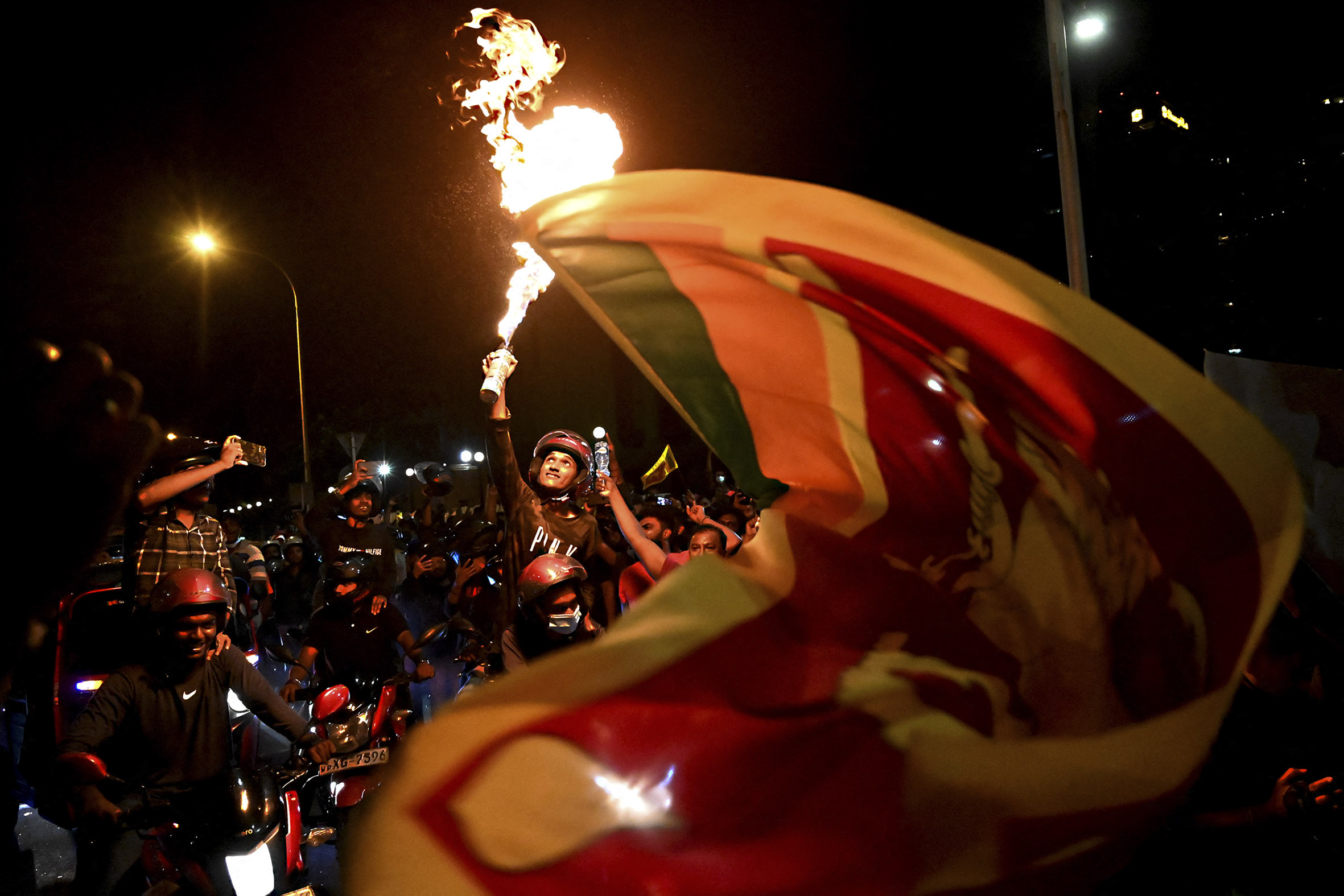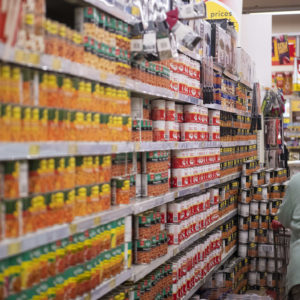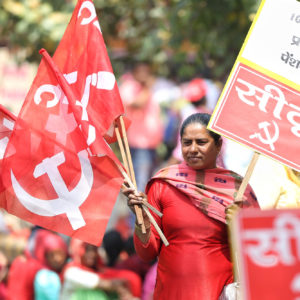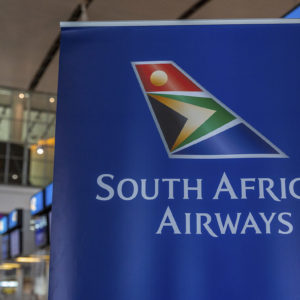Sri Lanka’s financial crisis fuels political unrest
The island nation is facing unprecedented upheaval as a growing economic crisis sparks anti-government protests in the streets and calls for the president to resign.
Author:
13 April 2022

For several weeks now, thousands of Sri Lankans have taken to the streets in anti-government protests reminiscent of the Arab Spring as the country grapples with an economic crisis that has resulted in record inflation, a devalued currency, blackouts and a scarcity of basic necessities.
The worst economic crisis in its post-independence history has plunged Sri Lanka deeper into a political crisis that shows no signs of abating. But what may appear as a sudden descent into chaos has been in the making for years.
Owing to its shrinking foreign currency reserves, Sri Lanka is mired in public debt and struggles to pay for imports of fuel and other necessities. The country needs about $3 billion to help restore supplies of essential items, including fuel and medicine, as well as bridge financing to avoid a hard default on its outstanding foreign debt of $51 billion.
Related article:
Because of the financial crunch, the 22 million residents have been dealing with skyrocketing prices and a shortage of essential items. The cost of living has nearly doubled in the past four months, making it unaffordable for many.
Since Sri Lanka gets most of its electricity from imported oil and coal, the government has been compelled to impose power outages that have left citizens in the dark for up to 13 hours at a time, and this may be extended to 16 hours. There is so little money that some of its embassies and consulates are being closed temporarily.
People have been waiting in queues for hours to get fuel or have their cooking gas canisters refilled, with several elderly people even dying while waiting in line for fuel. Schools have been forced to cancel exams owing to a shortage of paper. The crisis has also resulted in the declaration of a public health emergency owing to a severe shortage of medicines and equipment, and state hospitals have had to halt regular surgeries.
Tense political situation
The protests have morphed into anti-regime rallies demanding the resignation of President Gotabaya Rajapaksa, who is accused of corruption and mishandling the economy. They turned violent on 31 March in the capital Colombo as public rage spilled over into the streets. Demonstrators gathered outside the president’s residence, slinging stones and lighting fires. The police used tear gas and water cannons to disperse them and arrested over 50 demonstrators.
Rajapaksa then declared a state of emergency, but it was lifted on 5 April. A few days earlier, on 2 April, the government had also imposed a 36-hour curfew to effectively prohibit any gatherings, saying “no person shall be on any public road, railway, public park, public recreation ground or other public ground or the seashore”. After the curfew came into effect, the police reportedly arrested over 660 people for violating it.
To suppress a public outcry, the government imposed restrictions on social media platforms including Facebook, YouTube, WhatsApp, Twitter, Instagram, Telegram and TikTok. As services began to be disrupted, users around the island began to use virtual private network services to circumvent it.
Related article:
Condemning the social media restrictions, the Bar Association of Sri Lanka said it was a “vital aspect” of freedom of expression for citizens and “as important as traditional media”. The Human Rights Commission of Sri Lanka observed that the country’s Telecommunications Regulatory Commission had “no authority” to ask service providers to restrict social media access. Opposition politicians also slammed the government for “stifling” free expression. As the decision came under widespread criticism, the access to the sites was restored.
Despite the clampdowns, protesters have continued to demand Rajapaksa’s resignation, brandishing signs calling his family “thieves” – his older brother Mahinda Rajapaksa is the prime minister – and urging them to “go home”. However, both of them have refused to step down.
The two are third-generation politicians and their family has dominated the island’s politics for nearly two decades. Rajapaksa family members are currently in charge of 11 ministries. During Mahinda’s second presidential term from 2010 to 2015, as many as 40 members of the family were said to be in government posts outside the Cabinet.
Resignations and resistance
On 3 April, the Cabinet resigned en masse, leaving the government scurrying to recruit new ministers to help guide the country through the crises. A few days later, on 5 April, at least 41 parliamentarians quit the ruling coalition, denying the Rajapaksas a governing majority in the assembly. But the government’s chief whip, Johnston Fernando, informed Parliament that the president would not resign under any circumstances.
Sri Lanka’s main opposition party, Samagi Jana Balawegaya, has also increased its pressure on the regime and said it would propose a motion of no confidence in the president if the government does not provide immediate relief for the people affected by the economic crisis. It has also called for the abolition of the all-powerful executive presidency.
In the midst of this growing political instability, Sri Lanka is frantically seeking international loans to help the country stave off an even worse financial crisis. On 6 April, Rajapaksa announced a three-member advisory group to help the government in negotiations with the International Monetary Fund. India has already offered to issue a credit line of $1 billion and $500 million in gasoline.
According to experts, the current crisis was in the making for years as the government repeatedly borrowed large sums of money from international lenders to enhance public services. While its foreign debt increased, the economy was severely affected by heavy monsoons in 2016 and 2017 that reduced agricultural output.
Related article:
The economic crisis was compounded by the Covid-19 pandemic, which hit the country’s revenue from tourism and remittances, a key source of income and foreign exchange. By 2021, Sri Lanka had welcomed just 173 000 tourists for the year, down from 2.3 million in 2018. The Russia-Ukraine war has only exacerbated these troubles as oil prices soar.
However, government critics argue that ill-advised tax cuts and economic mismanagement have put further strain on the country’s public finances, precipitating a spiralling economic meltdown.
The rallies have largely unified ethnic and minority groups as Sri Lanka continues to heal from a long civil war that ended in 2009. But there are fears that the continuing crisis may exacerbate civil strife among sections of the majority Sinhalese population, which is polarised between those who want Rajapaksa out of power and those who want him to stay.
Meanwhile, five experts from the United Nations have called on the government to engage in “constructive and open dialogue” on political reforms with the Sri Lankan people. “Peaceful protests and voices of legitimate dissent should not be met with unnecessary and excessive use of force by authorities,” they said. “Resorting to use of force against protesters will only jeopardise avenues to express discontent peacefully, risking instead an escalation of tensions.”



